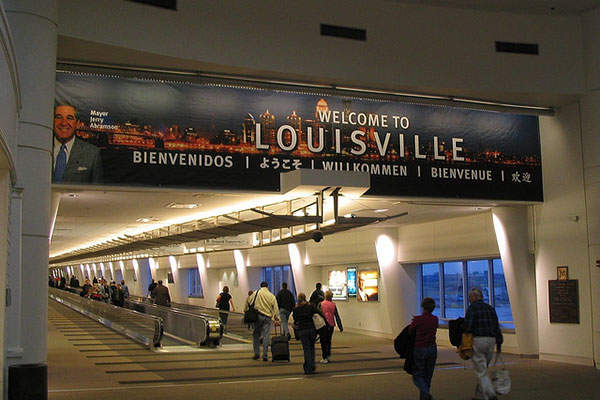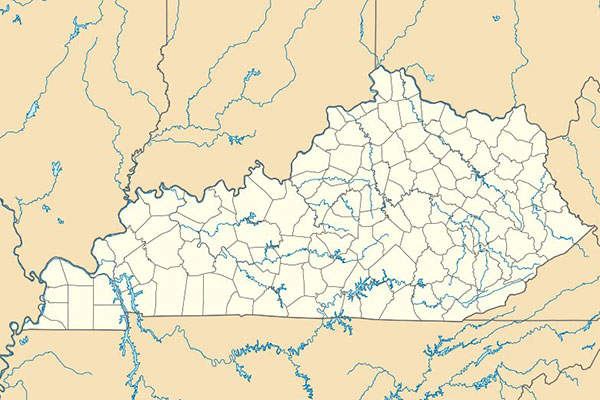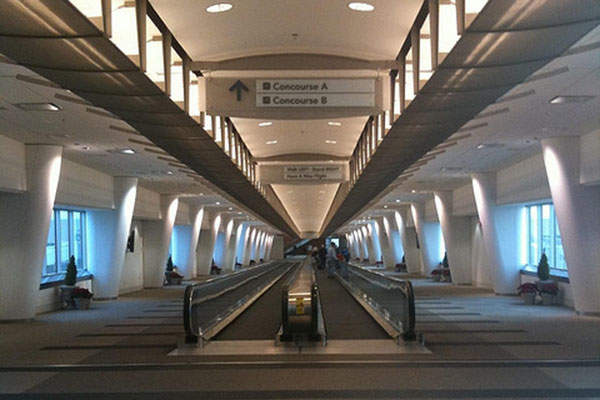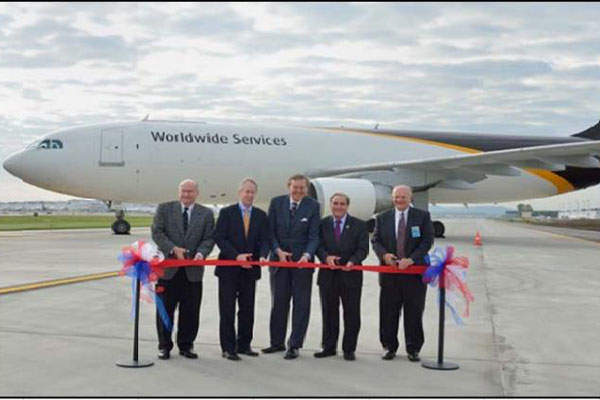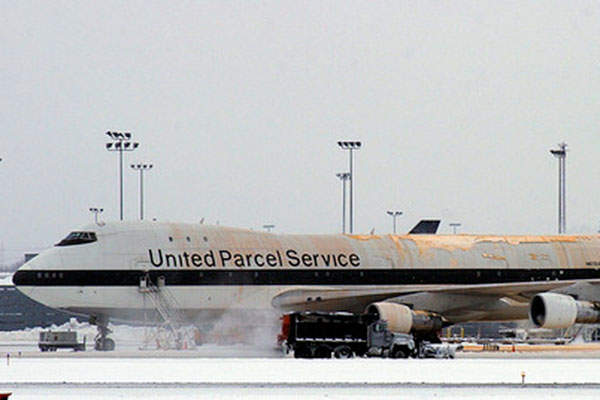Louisville International Airport, formerly known as Standiford Field, is a public and military-use airport located in the city of Louisville in Jefferson County, Kentucky, US.
The airport is owned and managed by Louisville Regional Airport Authority (LRAA), an autonomous municipal corporation established by Kentucky state statute. It handled 3.34 million passengers and 156,200 aircraft movements in 2016.
Spread over an area of 1,200 acres, the airport features a single passenger terminal and three runways. It also includes a reliever airfield known as Bowman Field, which is spread across a 426-acre site, featuring two runways, two fixed-base operators, an air traffic control tower, a terminal building and 232 hangars.
The Terminal Renewal and Improvement Project (TRIP) involves an investment of $2.6bn on the modernisation of the airport’s four old terminals over seven years.
The airport offers services to 21 non-stop destinations, including eight of the ten busiest airports in the US, and eight of the country’s top ten international gateways. Further, it offers one-stop services to 144 cities in 67 countries.
The airport served 3.36 million passengers and was ranked the third busiest cargo airport in North America and the seventh busiest in the world in 2013-2014.
The airport authority has approved a five-year capital improvement plan for the fiscal years 2016-2020 in 2015, which envisages a $145.2m investment, including $127m for Louisville Airport and $18.2m for Bowman Field.
Louisville Airport capital improvement plan
The key component of the capital improvement programme is the passenger terminal enhancement project, which improved the aesthetic appearance of the terminal to enhance customer experience.
The estimated investment for the terminal upgrade was $9.5m. Works on the multi-phased and multi-faceted enhancement project began in the third quarter of 2015 and were completed by the first quarter of 2017.
The terminal enhancement is the vision of two community working groups, namely the University of Louisville, and the Louisville Metro Government.
Other projects in the improvement include a runway safety area improvement project, reconstruction on the terminal’s airfield apron, and annual airfield electrical and pavement rehabilitation projects.
Development projects at Bowman Field include continuing the airport area safety programme, replacement of airfield lighting components, and rehabilitation of select airfield pavement.
The execution of these projects is, however, subject to approval by the LRAA board and the availability of funding.
Terminal features at the Louisville international airport
The airport features a two-level passenger terminal named Jerry E, which has two concourses, A and B. The lower level, meant for arrivals, houses a baggage claim area, rental car counters, information centres, animal and pet relief area, automatic electronic defibrillator, passenger restrooms, and phone services. Escalators and elevators lead to the second level of the terminal.
The upper level, designated for departures, features airline ticketing desks, Fort Knox reception room, food and drink establishments and shops, ATMs, information desk and game room.
Concourse A has gates from A1 to A15 and houses food / drink outlets, shopping complexes, restrooms, massage chairs, automatic electronic defibrillator, and information desks. Concourse B features gates B2 to B18 and has facilities similar to those in Concourse A.
An airside connector joins the terminal building with the two concourses. Towards the right of the airside connector is the Bourbon loft, which offers a view of the airfield and features areas to relax before or after taking the flight. A wide variety of bourbons and spirits, as well as light food choices are available at the loft. Computer workstations and Wi-Fi access are also provided.
Runways and taxiways at Louisville international airport
The airport has three runways designated as 17R / 35L, 17L / 35R and 11 / 29. Runway 17R / 35L is 3,633m-long and 46m-wide, while runway 17L / 35R is 2,615m-long and 46m-wide, and runway 11 / 29 is 2,210m-long and 46m-wide.
A part of the capital improvement project is the $18.8m Runway 11-29 Safety Area Improvement project, which aims to ensure that the safety areas for the runway are in compliance with the FAA standards. The project was completed by late 2015.
Due to lack of space to build a standard runway safety area, an engineered materials arresting system (EMAS), which stops aircraft by the loss of the energy required to crush the EMAS material, was installed at the approach end of the runway.
The airport authority completed the construction of a two-mile long, 100ft-wide taxiway known as Taxiway Alpha that runs parallel to runway 17R-35L in October 2014. The new taxiway, which was built as part of the Beyond 2010 plan aimed at preparing the airport for modern aviation needs, accommodates the latest generation large cargo aircraft. The total cost of the taxiway project was $46.6m, which was borne by the FAA ($43.8m) and the LRAA ($2.8m).
Parking at Louisville airport
The airport features two parking garages, which include one meant for under four-hours parking and another for over-four-hours. Each garage has four levels of parking and offers valet parking as well as handicapped parking spaces. A dedicated parking lot is available for credit card payers.
Reserved parking is also offered in two categories, namely Premium and Preferred. Premium parking allows passengers to park in any vacant space anytime in the under-four-hours garage, whereas preferred parking is offered only in the credit-card-only space and requires prior reservation of a convenient parking space.
A shuttle service is available from the long-term parking lot every ten to 15 minutes.
Ground transportation
Ground transportation options from the airport include taxicabs, rental cars, city buses and limousines. While cabs are available at the traffic island on the left of the taxi stand, rental car counters are located on the lower level of the terminal building, near the baggage claim area.
Bus services are offered by the City Buses Transit Authority of River City (TARC), whose pick-up point is located on the island on the east end of the terminal. Luxury limousines are available on the yellow curb outside the lower-level, for customers that pre-booked the pick-up.
Contractors involved
HNTB provided engineering services for Runway 11-29 safety area improvement project while E&B Paving has been awarded the construction contract.
Terminal Enhancement Project major improvements
The majority of the 105,000ft² airside renovation is near to completion and the landside renovations were finished in December 2016.
The major improvements of the project as of March 2017 includes new terrazzo floor and carpet, improvements between the security checkpoint and concourses which is the connector area, installation of new representative community images and other graphics, new wall treatments, and recharge stations.
Also, Host International of Bethesda, and gift-and-news retailer Paradies-Lagardère of Atlanta have collectively invested more than $8.3m in the modified food outlets and retail shops.

